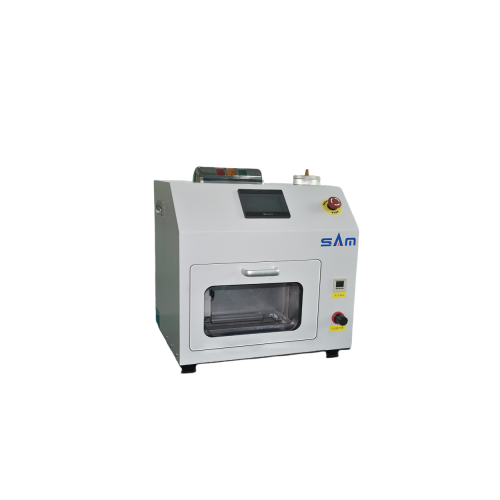Cleaning SMT (Surface Mount Technology) nozzles is essential for ensuring the efficiency of electronics manufacturing. Proper cleaning methods help maintain high-quality production. In this article, we’ll explore three effective methods for cleaning SMT nozzles and provide some best practices.
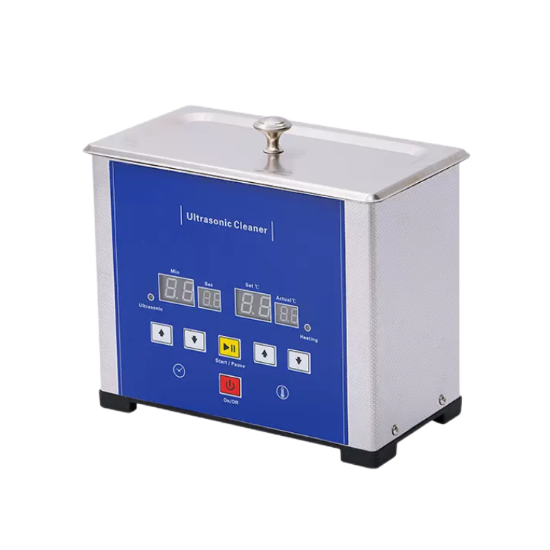
Ultrasonic Nozzle Cleaning Machine
How does it work?
It uses ultrasonic vibrations to move dirt and solder from the nozzles.
Advantages:
- You can add cleaning solvents or alcohol, which helps improve cleaning effectiveness.
- It can also clean PCBA boards of corresponding sizes.
Disadvantages:
- Nozzles can overlap when placed in the inner tank, making it hard to clean each nozzle thoroughly.
- It lacks touch functionality and air drying capabilities.
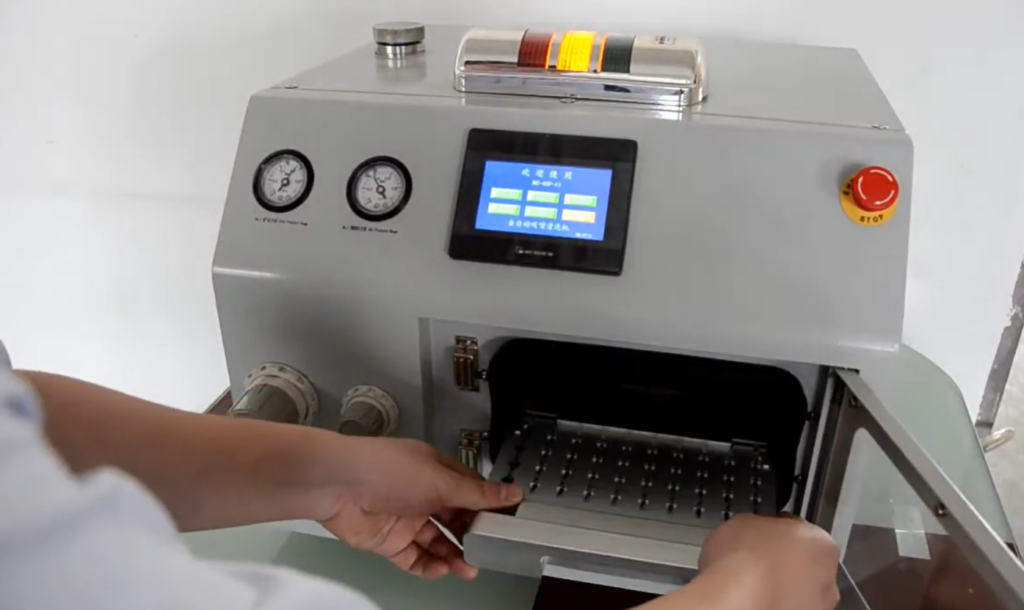
High-Pressure Water Mist Spray SMT Nozzle Cleaning Machine
How does it work?
This machine cleans nozzles through high-pressure pulse cleaning.
Advantages:
It has 30 nozzle stations, ensuring that each nozzle is cleaned and dried automatically.
The control is done through a PLC and touchscreen interface.
Uses pure water (HP value 5-7 soft water) without the addition of cleaning solvents, extending the nozzle’s lifespan.
Disadvantages:
- A limited number of nozzle stations can slow down the process.
- You cannot add cleaning solvents, which may limit cleaning effectiveness.
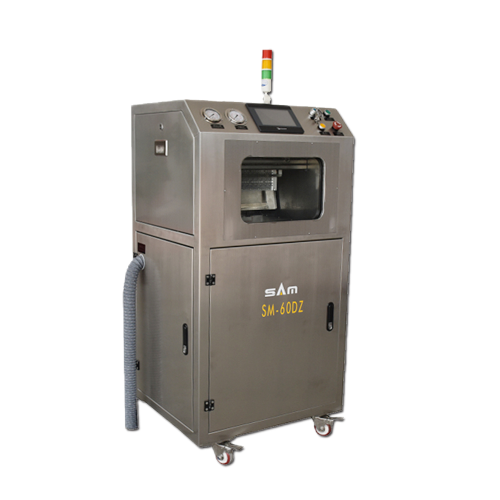
Ultrasonic Spray SMT Nozzle Cleaning Machine
What is it?
This is the latest upgraded version that offers double cleaning.
How does it work?
It combines a PLC touch screen with ultrasonic cleaning, pulse pressure rinsing, and air drying.
Advantages:
- It has a large capacity with 60 nozzle stations, ensuring thorough cleaning and drying.
- It can clean SMT nozzles made from tungsten steel, ceramic, or rubber materials.
- It allows the use of non-flammable cleaning solvents.
Disadvantages:
It tends to be more expensive than other cleaning machines.
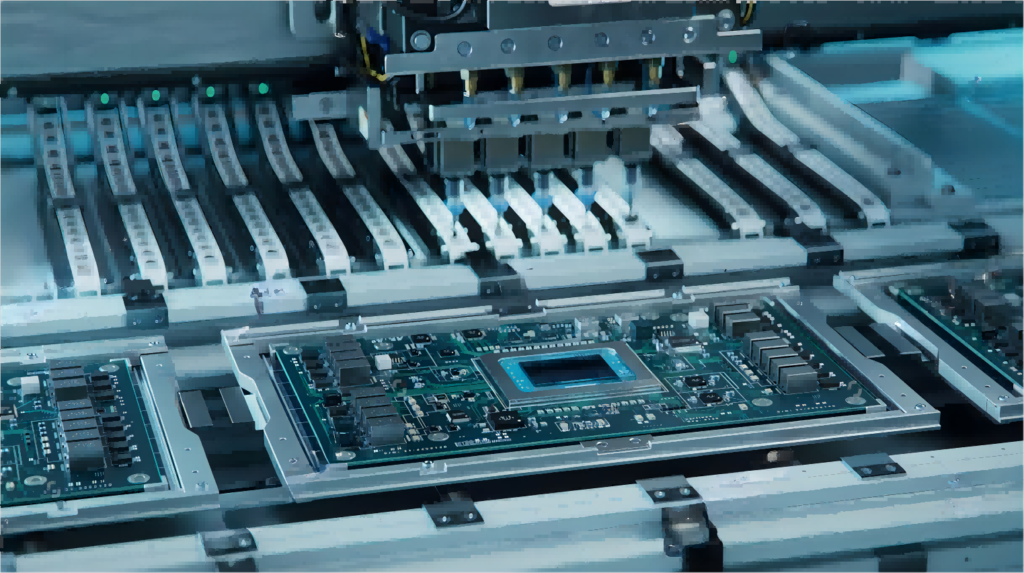
Comparative Data
Here’s a quick comparison of three models for cleaning SMT nozzles:
| Model | DR-LQ10 | FS-NCW/SM-30 | SM-60 |
| Design | Inner tank + heating + digital display | Small and white with warning light | Sturdy and stable with clear window |
| Capacity | Bulk SMT nozzles | Nozzle station: Cleans at least 30 nozzles at once | Nozzle station: Cleans at least 60 nozzles at once |
| Observation Window | No | Yes | Yes |
| Material | SUS304 Stainless steel + Plastic | SUS304 | SUS304 |
| Control System | Manual Button operate | One-click on/off | One-click on/off |
| Control Interface | Digital display+Button | Touch screen + PCL | Touch screen + PCL |
| Languages Available | No | Yes | Yes |
| Safety Features | No | Emergency brake and overload leakage protection | Emergency brake and overload leakage protection |
| Cleaning Medium | pure water + Cleaning solvent | pure water (HP value 5-7 soft water) | pure water (HP value 5-7 soft water) DI water+Cleaning solvent |
| Waste Collection | No | Yes | Yes |
| Additional Features | Ultrasonic cleaning + Temperature adjustment | Automatic washing with High-Pressure Water Mist Spray(pulse cleaning)+ air drying | Automatic washing with ultrasonic cleaning + pulse pressure rinsing + pulse pressure air drying |
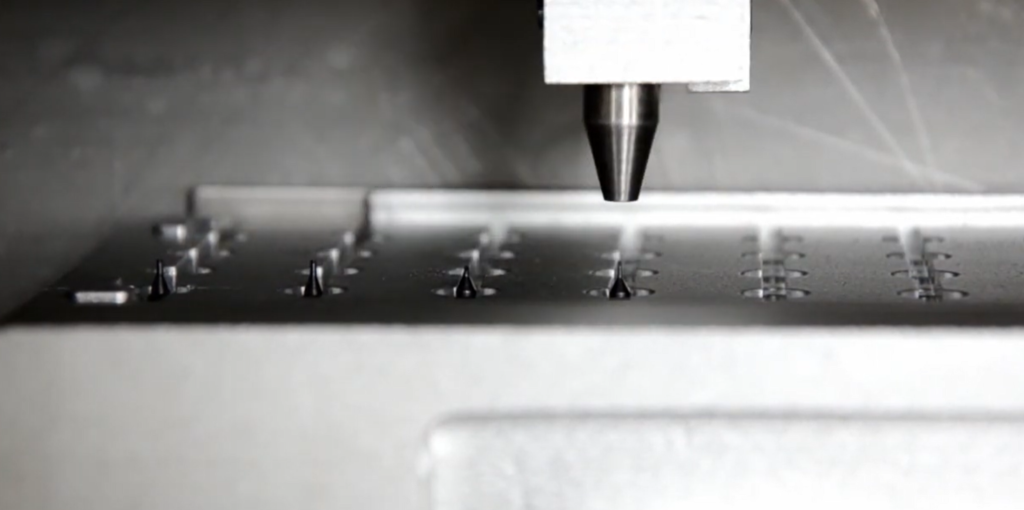
Conclusion
- Ultrasonic cleaning machines are great for adding solvents and ensuring a thorough clean, but they may not clean every nozzle perfectly due to overlapping.
- High-pressure water mist machines offer automated cleaning for more nozzles but can’t use additional solvents.
- Ultrasonic spray machines provide double cleaning and can handle various nozzle materials, though they come at a higher price.
FAQ
Q: What are the best practices for cleaning SMT nozzles?
A: We suggest using models FS-NCW, SM-30, and SM-60.
Q: How long does it typically take to clean SMT nozzles using the best practices?
A: It varies by method, but ultrasonic cleaning can take a few minutes, while high-pressure cleaning may take tens of seconds.
Q: What specification nozzles do these machines clean?
A: SMT nozzles are sized from 0201 to 2512 (inches).
Q: Can we use dry air from heat and cool air together?
A: We suggest using cool air for drying. Our machines use this function and do not damage SMT nozzles.

